Exam 3 World Arts II
5.0(2)
Card Sorting
1/43
Earn XP
Description and Tags
Study Analytics
Name | Mastery | Learn | Test | Matching | Spaced |
|---|
No study sessions yet.
44 Terms
1
New cards

Walking Buddha
When: 14-15th century
Where: Thailand (only piece in Thailand we studied)
Extra Facts: Buddhism /Iconography: gestures made with the hands(mudrā)
Where: Thailand (only piece in Thailand we studied)
Extra Facts: Buddhism /Iconography: gestures made with the hands(mudrā)

2
New cards
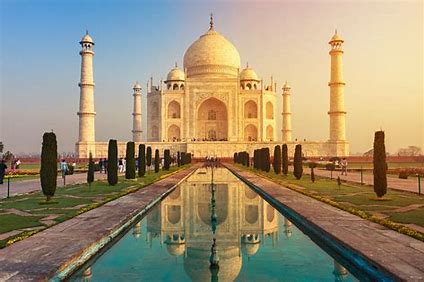
Taj Mahal
When: 1631-1648
Where: Agra, India
Extra Facts: built under the reign of Shah Jahan
Period: India-Mughal Period, 1526-1857
Where: Agra, India
Extra Facts: built under the reign of Shah Jahan
Period: India-Mughal Period, 1526-1857
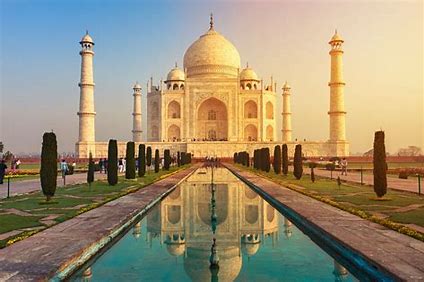
3
New cards
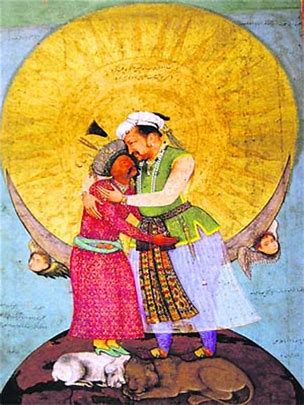
Jahangir and Shah Abbas
When: 1618 (India-Mughal Period)
Medium: Opaque watercolor, gold, ink on paper
Extra Facts: Mughal miniature painting
Medium: Opaque watercolor, gold, ink on paper
Extra Facts: Mughal miniature painting
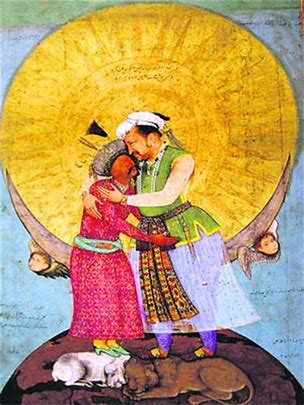
4
New cards

Krishna and the Gopis
When: 1525-50 (India-Mughal Period)
Where: Rajasthan, India
Medium: Gouache on paper
Extra Facts: Rajput Miniature painting , gita govinda
Where: Rajasthan, India
Medium: Gouache on paper
Extra Facts: Rajput Miniature painting , gita govinda

5
New cards

Victoria Terminus
When: 1887 (Colonial Period, British Raj)
Where: Mumbai (Bomba7), India
Who: Frederick Stevens
style: Gothic Revival
Where: Mumbai (Bomba7), India
Who: Frederick Stevens
style: Gothic Revival

6
New cards

Rock Garden, Kyoto, Japan
When: 1480 (Muromachi Period)
Where: Kyoto, Japan
Where: Kyoto, Japan

7
New cards

Chinese Lions
When: Late 16th century (Momoyama Period)
Where: Japan
Who: Kano Eitoku
Extra Facts: it is a six-panel folding screen (byobu=screen) with gold leaf being the prominent

8
New cards

The Great Wave
What: The Great Wave (Edo Period)
When: 1831
Where: Japan
Who: Katsushika Hokusai
Extra Facts: it’s a woodblock print (ukiyo-e print)
When: 1831
Where: Japan
Who: Katsushika Hokusai
Extra Facts: it’s a woodblock print (ukiyo-e print)

9
New cards

The Stone Breakers
When: 1849 (Realism)
Where: France
Who: Gustave Courbet
Extra Facts: depicts two figures breaking rocks, meant to be the everyday man
Where: France
Who: Gustave Courbet
Extra Facts: depicts two figures breaking rocks, meant to be the everyday man

10
New cards

The Banjo Lesson
When: 1893 (Realism)
Where: Usa
Who: Henry Ossawa Turner
Where: Usa
Who: Henry Ossawa Turner

11
New cards
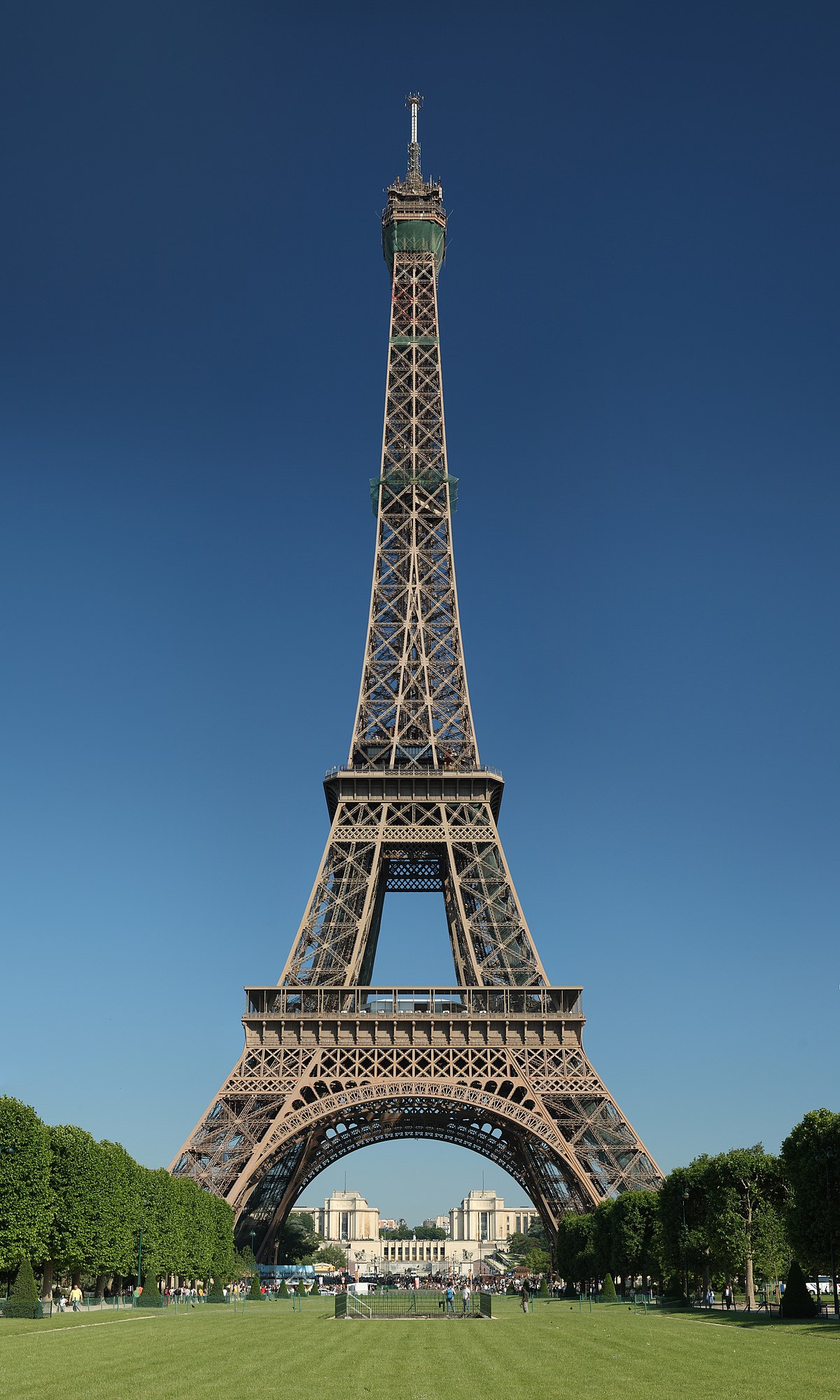
Eiffel Tower
When: 1889 (19th century Modernism)
Where: Paris, France
Who: Gustave France
Extra Facts: World Fairs, prefabricated
Where: Paris, France
Who: Gustave France
Extra Facts: World Fairs, prefabricated

12
New cards

Olympia
When: 1863 (19th century Modernism)
Who: Manet
Where: France
Extra Facts: based on Titian’s Venus of Urbino / Avant-garde (a person or work that is experimental, radical, or unorthodox with respect to art, culture, or society
Who: Manet
Where: France
Extra Facts: based on Titian’s Venus of Urbino / Avant-garde (a person or work that is experimental, radical, or unorthodox with respect to art, culture, or society

13
New cards
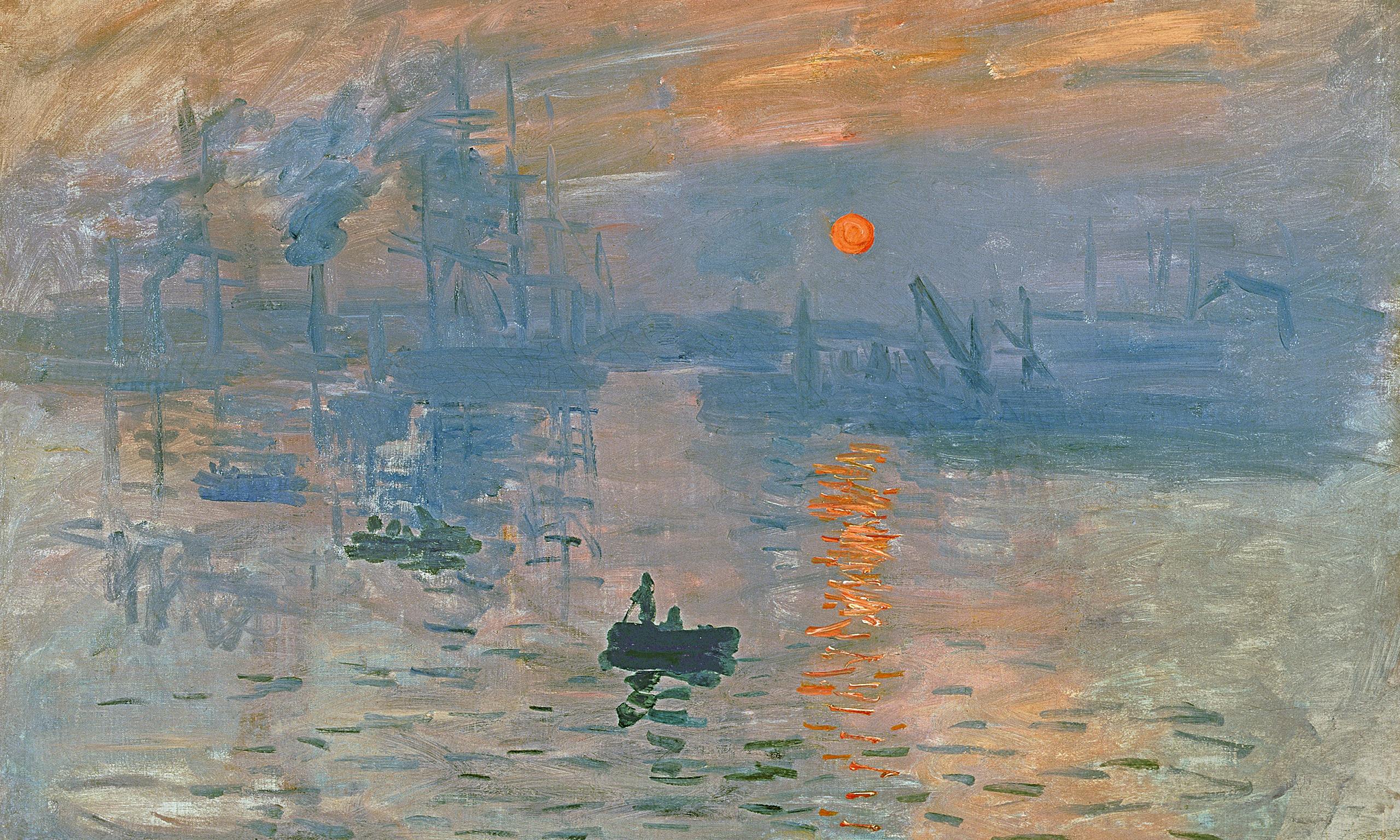
Impression: Sunrise
When: 1872 (19th century Modernism)
Where: France
Who: Claude Monet
Extra Facts: impressionism /En-Plain Air
Where: France
Who: Claude Monet
Extra Facts: impressionism /En-Plain Air

14
New cards

A Sunday Afternoon on the Island of La Grande Jatte
When: 1884-86 (19th century Modernism)
Where: France
Who: George Seurat
Extra Facts: used pointillism (piece is made up of little dots) and complimentary colors, this is a post- impressionism piece
Where: France
Who: George Seurat
Extra Facts: used pointillism (piece is made up of little dots) and complimentary colors, this is a post- impressionism piece

15
New cards

Starry Night
When: 1889 (19th century Modernism)
Where: France
Who: Vincent Van Gough
Extra Facts: post-impressionism
Where: France
Who: Vincent Van Gough
Extra Facts: post-impressionism
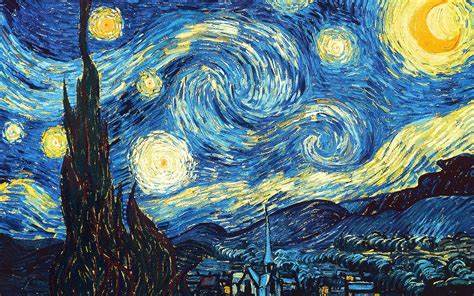
16
New cards

Wainwright Building
When: 1891
Where: St Louis, Missouri
Who: Louis Sullivan
Extra Facts: Chicago School Functionalism
Where: St Louis, Missouri
Who: Louis Sullivan
Extra Facts: Chicago School Functionalism
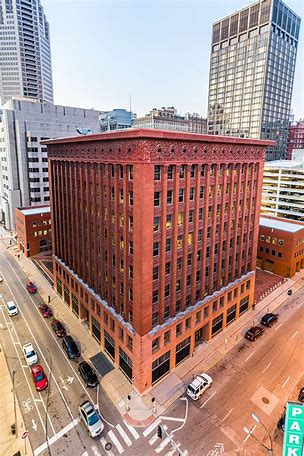
17
New cards

Le Bonheur de Vivre (The Joy of Life)
When: 1905-06 (20th century Modernism)
Where: France
Who: Matisse
Extra Facts: French Fauves
Where: France
Who: Matisse
Extra Facts: French Fauves

18
New cards

Ma Jolie
Artist: Pablo Picasso
Period: 20th century Modenism
Features: Cubism
Period: 20th century Modenism
Features: Cubism

19
New cards

LHOOQ
When:1919
Who: Marcel Duchamp
Extra Facts: it’s a postcard of the Mona Lisa w/ a mustache and a darker coloration: Dada Art
Who: Marcel Duchamp
Extra Facts: it’s a postcard of the Mona Lisa w/ a mustache and a darker coloration: Dada Art

20
New cards

Fallingwater (Kaufmann House)
When: 1936-39
Where: PA
Who: Frank Lloyd Wright
Extra Facts: integrates nature (organic architecture)
Where: PA
Who: Frank Lloyd Wright
Extra Facts: integrates nature (organic architecture)

21
New cards

The Great City of Tenochtitlan
When: 1945 (20th Century Modernism)
Where: Mexico City, Mexico
Who: Diego Rivera
Extra Facts: Mexican muralist Movement/ fresco
Where: Mexico City, Mexico
Who: Diego Rivera
Extra Facts: Mexican muralist Movement/ fresco

22
New cards

Autumn Rhythm (No. 30)
When: 1950 (20th Century Modernism)
Where: Unites States
Who: Jackson Pollock
Extra Facts: NY School of Art/ Abstract Expressionism
Where: Unites States
Who: Jackson Pollock
Extra Facts: NY School of Art/ Abstract Expressionism

23
New cards

Marilyn Diptych
When: 1962 (20th Century Modernism)
Where: USA
Who: Andy Warhol
Extra Facts: silkscreen (printmaking method)/She commits suicide in 1962/Pop Art
Where: USA
Who: Andy Warhol
Extra Facts: silkscreen (printmaking method)/She commits suicide in 1962/Pop Art

24
New cards

Seagram Building
When: 1958 (20th Century Modernism)
Where: New York City
Who: Ludwig Mies and Phillip Johnson
Extra Facts: International Style/ Skyscraper
Where: New York City
Who: Ludwig Mies and Phillip Johnson
Extra Facts: International Style/ Skyscraper

25
New cards
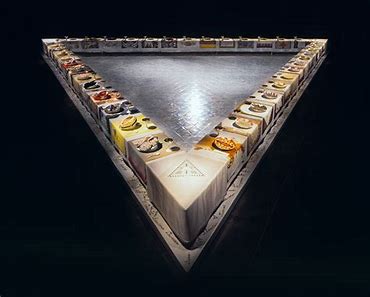
The Dinner Party
When: 1974-79 (Postmodernism)
Who: Judy Chicago
Extra Facts: each part is for a specific woman throughout history (39 sections), empowers crafts like quilting, center is 999 tiles w/ women's names on them, early feminist art
Who: Judy Chicago
Extra Facts: each part is for a specific woman throughout history (39 sections), empowers crafts like quilting, center is 999 tiles w/ women's names on them, early feminist art

26
New cards

Horn Players
When: 1983 (Postmodernism)
Who: Jean-Michael Basquiat
Extra Facts: refers to famous brass players and jazz musicians
Who: Jean-Michael Basquiat
Extra Facts: refers to famous brass players and jazz musicians
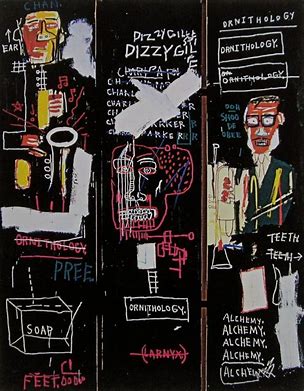
27
New cards

China Monument: Temple of Heaven Installation
When: 1998 (Postmodernism)
Who: Wenda Gu
Who: Wenda Gu

28
New cards

Nkisi Nkondi
When: 19th century (Africa)
Where: democratic republic of Congo
Who: Kongo Culture
Where: democratic republic of Congo
Who: Kongo Culture
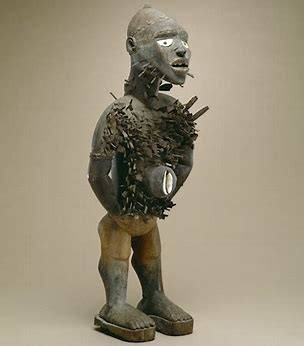
29
New cards

Sowei Mask
When: 1880-86 (19th Century Africa)
Where: Sierra Leone
Who: Mende Culture
Extra Facts: Mask made for women/intelligent/supposed to stay quiet
Where: Sierra Leone
Who: Mende Culture
Extra Facts: Mask made for women/intelligent/supposed to stay quiet
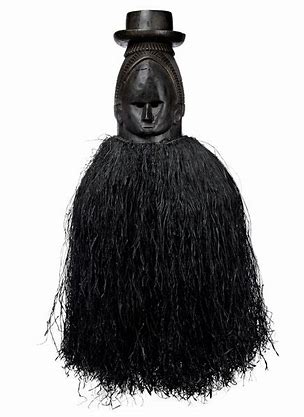
30
New cards
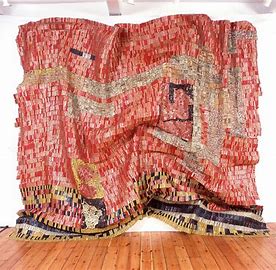
Flag for a New World Power 21st century
When: 2004 (21st Century)
Who: El Anatsui
Extra Facts: made of aluminum bottle caps, Kente Cloth
Who: El Anatsui
Extra Facts: made of aluminum bottle caps, Kente Cloth

31
New cards
Harlem Renaissance
The modern movement that celebrated African American history and culture that was centered in a neighborhood of New York City.
32
New cards
organic modernism
encompasses artwork that blends in with nature. It is what Frank Lloyd Wright call his works like Fallingwater
33
New cards
Surrealism
The Modern art movement form after WWI out of Dada art. Artist like Salvador Dali were inspired by Sigmund Frued's psychoanalysis and depicted dream-like imagery to reveal the unconscious
34
New cards
Modernism
This time period in art roughly began around the 1860's and was evident until about the late 1960's. It includes many different art movements which tended to challenge the past and express more personal reactions to dramatic changes brought on by events like industrialization.
35
New cards
International Style
The style of architecture developed after WWI and reflected the need to rebuild and reorder after the war. It is characterized by the use of industrial materials like glass, steel, and concrete: plain, standardized geometric building parts: a universal form that stands out from its environment and could be placed anywhere in the world
36
New cards
Kente
The cloth is a textile originally associated with royalty in
37
New cards
readymade
Marcel Duchamp called his works like Fountain and LHOOQ this term which refers to his use of manufactures objects for art.
38
New cards
dada
work that stands for something that doesn't make any sense
39
New cards
Futurism
an artistic movement begun in Italy in 1909 that violently rejected traditional forms so as to celebrate and incorporate into art the energy and dynamism of modern technology.
40
New cards
41
New cards
regionalism
is a political ideology that focuses on the interests of a particular region, group of regions or other subnational entity
42
New cards
iconography
the visual images, symbols, or modes of representation collectively associated with a person, cult, or movement
43
New cards
mudra
hand symbols
44
New cards
Kongo Nkisi Nkondi expresses what African theme?
connecting with the spirit world for assistance